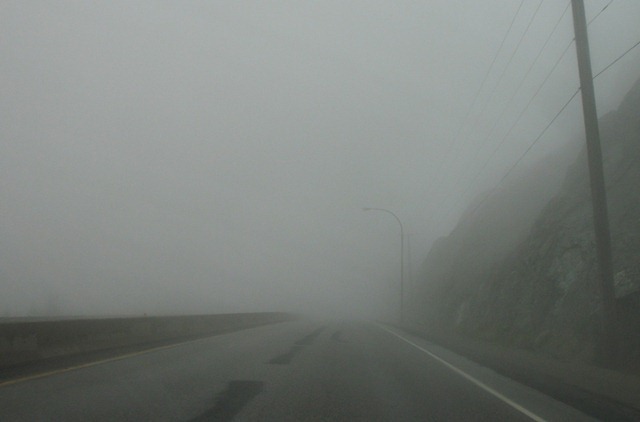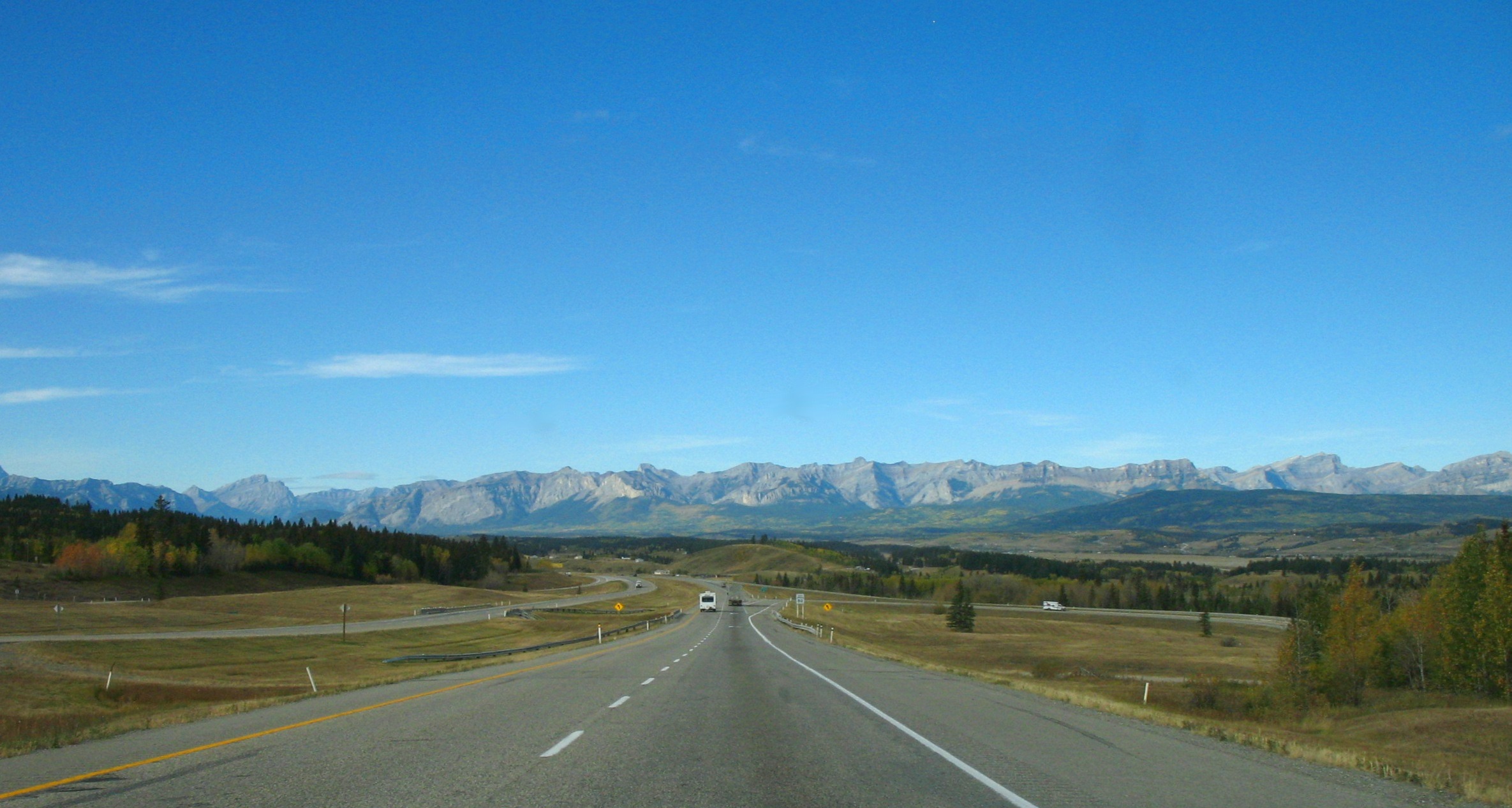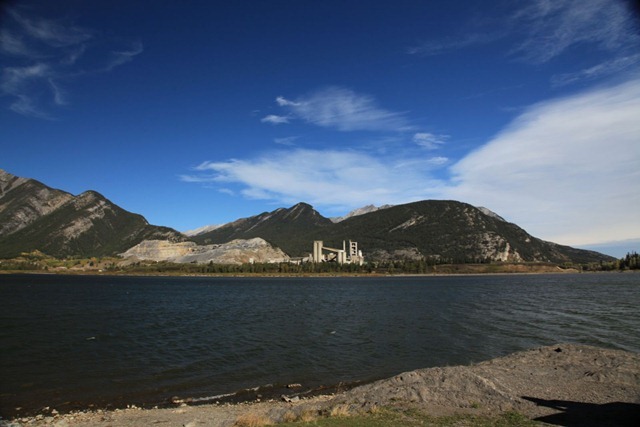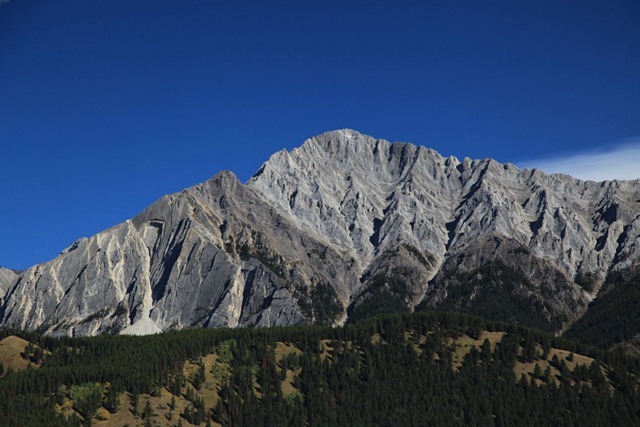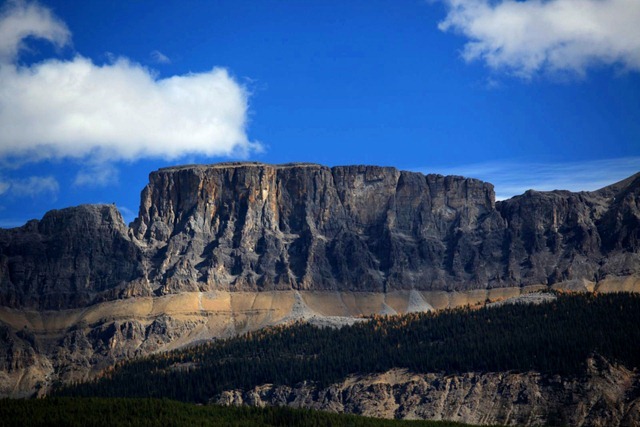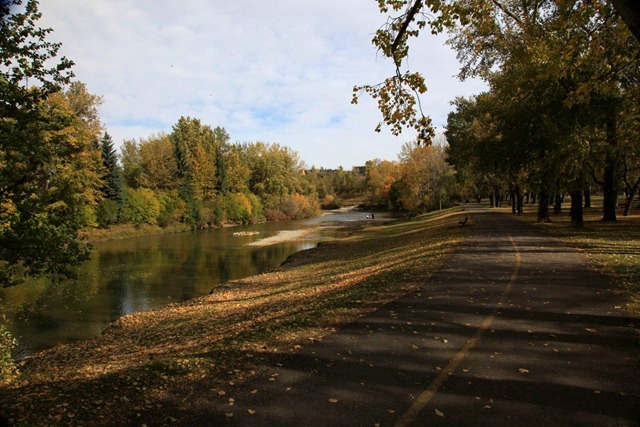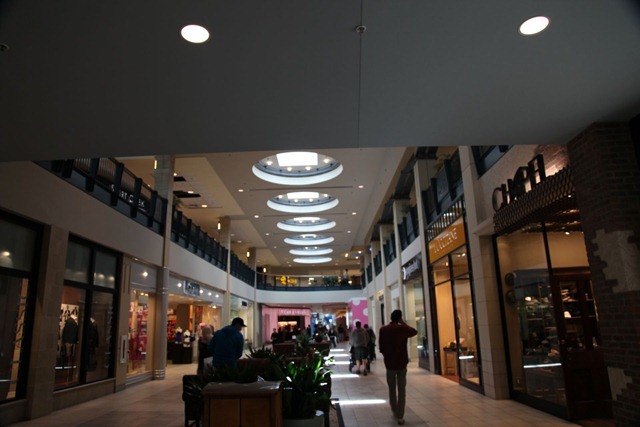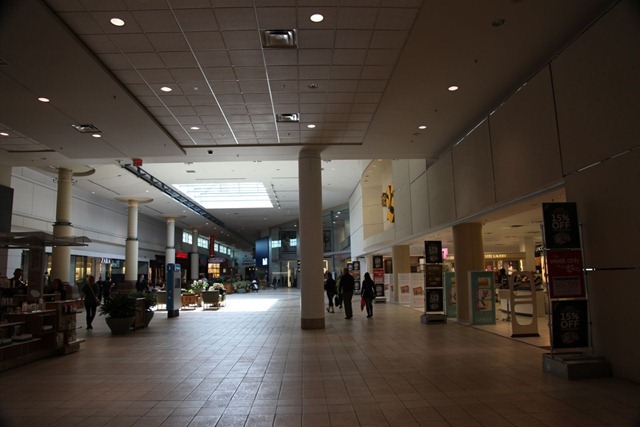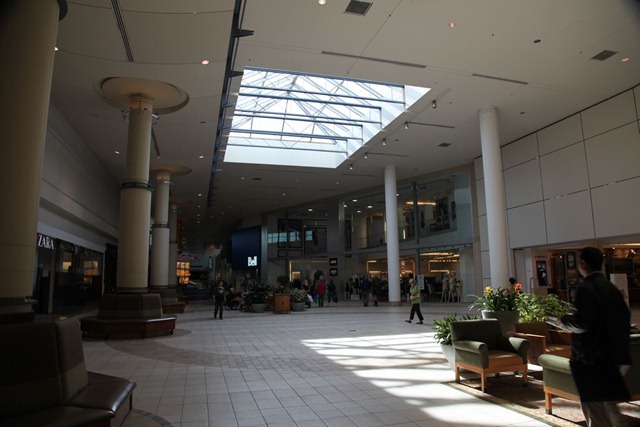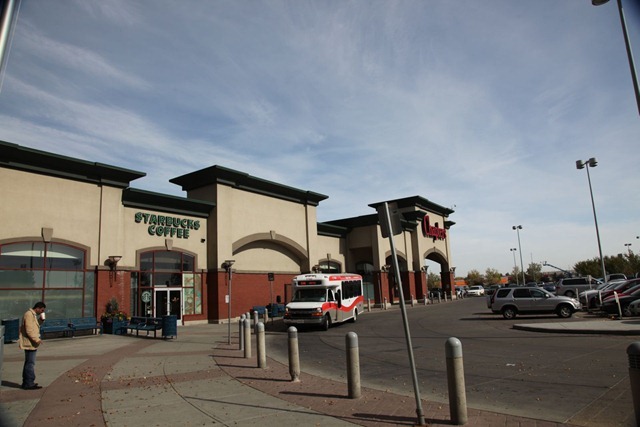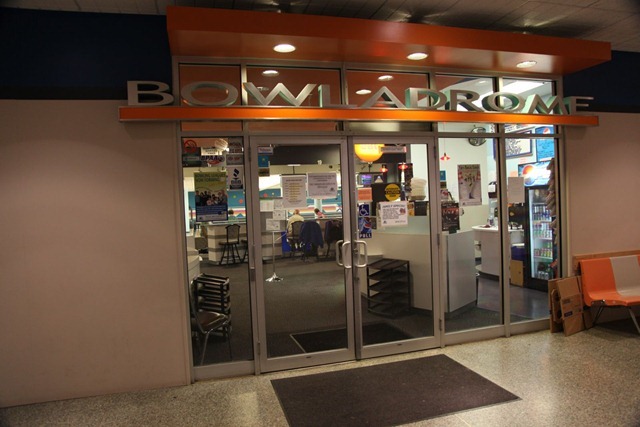What I’ve been reading
The Age of Spiritual Machines by Ray Kurzweil – Wherein the author argues from 60 years of historical data about increases in computing power that commodity computers will exceed not only the processing power of the human brain but that of all living humans by the end of the 21st century.
Coupled with advances in sensing technologies such as MRI, we should soon be able to (either destructively or not) transfer human minds into computer simulations of working brains. Eventually the majority of human civilization will be in digital form and a staggering array of new kinds of interaction will become possible.
Naturally I hope he’s right, but I think his predictions are a little too optimistic in terms of timing.
—–
S. Andrew Swann: The Hostile Takeover trilogy (Profiteer, Partisan and Revolutionary) – Pretty good as political science fiction goes. An eclectic cast of non-stereotypical characters, set in an interesting universe that makes me want to check out some of his other books in the same setting. There are a couple of places between the halfway point and the end where things get a little too deus ex for my taste, but thankfully all that gets out of the way in time for the more conventional resolution.
—–
The Grand Design by Leonard Mlodinow (with Stephen Hawking’s name on the cover to boost sales). Basically it’s a science popularization book specifically about quantum theory, what it does and doesn’t do, and what we’ve learned from it. Short and easy to understand.
—–
The Complete Maus – My long relationship with this book has finally come to a close. I first noticed the series in the the college library when I was in my mid-teens. Leafing through it, I could tell that it contained good storytelling and told an important tale, but at the time I had little interest in history, so I shelved it with a note to read it through later. More than 20 years later, that “later” has finally arrived thanks to someone at work selling the compilation at a good price. Well, having read it, I have to say it was rewarding. It’s riveting in the way all tales told by survivors of major events are riveting. Not much more to say than that; go read it.
—–
Trouble with Lichen, by John Wyndham – How rare, a pro-immortalism story with a happy ending. It’s a short and easy read, and well done. It mostly concerns means of manipulating the masses into accepting longevity advances, something individuals are strangely resistant to and institutions actively resistant to. Recommended.
—–
Fleet of Worlds by Edward M. Lerner and Larry Niven – a very enjoyable Known Space story that reads like a classic Niven. There are a couple of flaws with the setup and teardown; the ending, first off, seems to conflict timing-wise with established canon about the fleet in other Known Space stories. Secondly, I have trouble reconciling the setting for the story (a human colony on the fleet) with known behavior of the Puppeteers – it’d be a real stretch for them to do what the backstory claims they did.
—–
Year Million edited by Damien Broderick. It’s a collection of essays by a variety of authors, most of them scientists, ostensibly about what they think our destiny over the next million years is likely to be like. Many of them go straight for the big picture though and talk about all of the future.
My favorite part is this quote by Steven B. Harris, who articulates something I sort of unconsciously knew all along but am excited to see revealed clearly: “Homo Sapiens Sapiens is now largely a software species, perhaps the first, governed mainly by epigenic factors (outside the genome), some of which are extrasomatic (outside the body). Much of what makes us special as a species is stored not in genes or brains, but in libraries, laws, traditions, and songs.”
This is so true. Obviously our genes are somewhat important because they give us the hardware capable of running the minds we’re so proud of, but the hardware by itself is useless; a child by itself does not grow into a human being, nor can it be made into one after it has grown on its own past a certain point (as I believe is demonstrated by studies of feral children). Everything we consider important about ourselves as individuals and as a species is programmed into us after we’re born by those who teach us. And the continual improvement of that programming is what has enabled us to improve our lot at an exponential rate.
The rest of the book I found rather depressing though, for two reasons.
First, many of the authors keep coming back to Matrioshka Brains, and collectively they make the case that building such devices is the logical way to squeeze the most living out of the universe in its present form (ie while there are still stars), and that the drive to maximize life will ultimately compel all sentients to build such things. I can’t disagree, but I don’t like it either – it’ll make the universe a boring place. Suppose we were to build an M-Brain for ourselves. We could have trillions and trillions of humans living it in happily for billions of years or more, but to build it we’d have to disassemble the rest of the solar system – there’d be no other places to live or to explore. We would basically turn inward, living in simulated universes of our own devising instead. That’s not for me – I want to explore the real universe. So we’d probably end up with an expanding shell of people like me, moving outward to explore real places while they still exist, and behind us the stars would be going dark as more and more of them are wrapped in minds or their energy redirected to power minds elsewhere.
But then again, stars (and matter itself) won’t last for ever, which brings me to the second depressing part. Recent discoveries suggest that not only is the universe expanding, not only is it not likely to contract again, but the rate of expansion is actually accelerating. These measurements still need to be confirmed, and the baffling question of how this can be happening could use a good answer, but for now let’s assume it’s true.
One consequence of this is that the observable universe will shrink over time – the furthest galaxies will fade away as they accelerate to the point where even the light they shine directly at us isn’t fast enough to outrace the expansion of the space in between. Superclusters of galaxies may stick together, but the gulfs between them will get larger, and that means the limit of the amount of interesting places we can explore gets smaller with time, even though the universe itself is getting larger.
Another is that the majority of time in this universe – basically all of it – will be spent in an uninsteresting state where there is no matter and almost no energy, and less energy all the time. We’re living on the slope of an exponential downward curve in the abundance of energy gradients (which are necessary for any kind of thought). Eventually the stars will go out and stop being born. Then the black holes will evaporate. Then, assuming we’re correct in our belief that protons can decay, all matter will evaporate into subatomic particles and the universe will contain only energy, radiating out in all directions and thus becoming more diffuse. The temperature of the universe will become more and more uniform and will continue to drop towards absolute zero – but will never actually get there. It’s impossible. So there will always be some energy gradient around – always less and less, but some. And this process will continue for ever.
Imagine then that we can devise some way to survive the death of matter – say we can create a cloud of particles that can compute thought and do so using any available energy gradient (though of course it’ll have to compute more slowly as less energy becomes available). Now we could live forever, but it would be, to me, a very claustrophobic existence because there would be nothing to do but live in simulations – navel-gazing in our memories, or trying out randomized simulations for all eternity. (Perhaps we’re actually living in one of these right now and have deliberately forgotten, to make it interesting). Because this environment would have to compute more slowly as the available energy dissipated, the ratio of real time to simulation time would increase. At first perhaps we might think faster than real time, but after a time it would get to the point where the components of our immaterial computer might only exchange a photon of information every trillion years, because there isn’t that much to go around. A hypothetical person inside the simulation watching a clock count off the real-time years would see the number rising faster and faster all the time, then the number of digits in the year would start rising faster and faster, and so on. But other than that one indication, the rest of us would never know.
I find this depressing and really hope we can engineer a better solution for our long-term destiny, though in a way this is still better than a Big Crunch because it means an infinite existence of a sort is possible.
But, all of this is still a ways off. We’ve got half a billion years or more to enjoy Earth, then perhaps five billion years with the solar system in its current form, and hundreds of billions until the stars in general start to fade. I hope that’s enough time to come up with some answers to these pressing problems.
Trip Stats
Some random statistics about my recent road trip across Canada. All numbers are approximate, and include the June begin/end trip to Vancouver Island.
Duration: 57 days.
Distance driven: 10,600 miles or 17,000 km.
Degrees of latitude crossed: 9° 5′ 22″
Degrees of longitude crossed: 63° 15′ 57″
Flat tires: 0!
Breakdowns: 0!
Illnesses: 0!
Change in driver mass: -12 lbs.
Photos taken manually: 10,000
Photos taken automatically (by dash-cam for a timelapse movie): 358,000
Times I had to stop and change the memory card in my dash-cam: 199
Total data produced: 680GB
Expense breakdown:
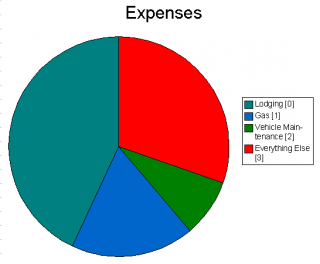
[0] The lodging figure does not include the seven nights I stayed with relatives, which would have added about another thousand dollars if it had been in hotels.
[1] Since octane ratings were downgraded last year, the Slaywagon doesn’t like regular gas much anymore, so I was buying midgrade on average.
[2] Although there were no breakdowns, I did get new brake pads, two oil changes and other preventative maintenance.
[3] “Everything Else” includes food, fares, admission charges, souvenirs and other incidental expenses. Food and souvenirs would have been the majority of it.
The total cost of the trip was about $14,000, which is both more and less than I expected. It was less in that I seemed to be spending money less quickly than I expected during the trip; most things were cheaper than I had figured. It’s more in that the total, when everything is accounted for, is larger than my most pessimistic pre-trip estimate. Shows how good I am at monitoring my spending. (Edit: I’m not confident that figure is right; mentally I can only account for about $11,000; maybe I punched something in wrong when adding things up.)
Live animals sighted (not including common birds and many dozens of snakes seen in a small area of Manitoba) (for reference, that’s one whale):

Roadkill sighted (not counting many dozens of 2D snakes spotted in a small area of Manitoba) (for reference, that’s one deer):
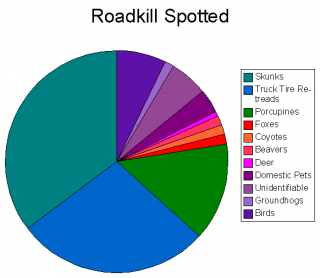
And here’s the overall GPS track for the whole thing. Green is eastbound, blue is westbound. The map plugin for WordPress can’t seem to handle this gracefully due to the amount of data, so here’s a link to the Google Earth file.
Home!
2011/10/01
Drove from Sicamous to Vancouver today, taking alternate routes via Kelowna and the back way from Hope just for variety.
Lousy weather today – heavy rain most of the way, some very dark clouds near Hope, and driving through the clouds themselves much of the way:
Not a whole lot to say. I’m home, my physical trip is finished. (The conceptual trip, of course, finishes where it started, but I’ve already done that part.)
I was away from home for 54 days total. I’ll post some statistics about the trip in a week or so once I have all the numbers.
As for summarizing feelings – I’ll have to think about it for a while, but I’m really glad I did this. Most importantly, I put some old ghosts to rest (like my memories of the farm in Manitoba) and formed some adult impressions of the eastern provinces to supplement my vague childhood memories.
Thanks to everyone who supported me along the way!
[gmap file=”__UPLOAD__/2011/10/20111001.kml” center=”files” zoom=”auto” visible=”true” type=”satellite”]
to Sicamous
2011/09/30
Breakfast at Peter’s again, then hit the road towards home. Calgary to Vancouver being a two-day drive, I stopped at Sicamous tonight – it’s almost exactly halfway. On the eastbound part of my trip I stayed at the nearby Three Valley Gap, but that place was a little too noisy and lacked good temperature control. I like the Best Western in Sicamous even though it’s not the quietest place either.
There were beautiful views of the mountains on the way out from Calgary this morning. I’ve never been so appreciative of them – I missed real mountains more than I realized when I’m out east. I’ve pretty much decided I need to live in Alberta or British Columbia.
Here’s the cement plant at Exshaw, and the mountain they’re taking apart:
My father worked on building that plant when we lived in Calgary. He commuted out here every day for a while.
The classic profile view of Castle Mountain:
And more mountain pictures, just because I’m so happy to see them:
Tomorrow night, if all goes to plan, I should finally be home.
[gmap file=”__UPLOAD__/2011/09/20110930.kml” zoom=”auto” center=”files” visible=”true” type=”satellite”]
More Calgary
2011/09/29
Started off the day with another breakfast at Peter’s Drive-In – can’t get enough of the place. I will be doing the same tomorrow before I leave town.
Since I was nearby, I dropped by Calgary’s Stanley Park – a small park on the Elbow River. We used to come here often because it has a convenient location by both road and bike path (Calgary has the best bike path system of any city I’ve been to), and it’s a great place for kids to cool off in the summer since there is both a pool and a shallow river to play in.
Did some book shopping at a couple of Fair’s Fair locations, then hit the Lego store again as compensation for forgetting to visit the one in Toronto when I was there.
Hung out with friends again in the evening, and saw another deer on the way to drop Frink off at home in the evening. Also got some good ideas for sprucing up my home network when I get home.
Chinook Mall in Calgary is almost unrecognizable now versus what it was when I was a kid or even when I last lived in Calgary. It’s a lot bigger now, walls have moved around, and I think almost every store is different both in identity and in boundaries, but some parts of the gross shape of the place are still there if I look at them right.
The upstairs area around this opening in the second floor used to be the food court. It was here that I ate my last ever meal from New York Fries – it had a weird taste that turned out to derive from the inclusion of a deep-fried, partially smoked cigarette.
At the end of that food court was once the theater where I saw Tron about four times during its first run, and then later a Playdium-like arcade. The latter was during the time I worked as a stock clerk in the Safeway grocery store that used to be just past where the Bell store is in these photos:
On the right, where The Bay is now, was once a Woolworth’s where I used to hang out in the video game section drooling over the latest Atari 2600 and Intellivision games, or drooling over the Lego sets – this is where my parents bought me most of my favorite Lego sets, including the never-surpassed LL 928.
Also around this area was the Radio Shack outlet where, firstly, my parents bought me a Casio VL-Tone to see if my interest in music was sufficient to warrant more development (it was), and later where just by chance I happened to be there when the clerk had one of the record players playing Kraftwerk‘s The Man-Machine, which totally captivated me – finally, music that actually sounded interesting! I insisted my parents get me that record and anything similar they could find, and the rest is an integral part of my history.
Outside the south end of the old mall (it goes further now due to the new theater), roughly where the Starbuck’s is now, was an instance of the Wizard’s Castle arcade chain (this is when I was a kid). This was probably the arcade I spent the most total hours in, as my parents would park me here with a roll of quarters while they did the grocery shopping. This is where I first saw Pac-Man, and played a lot of Missile Command and Boot Hill. It’s also where I learned that some people have inexplicable temper problems, as one guy punched a hole in the Missile Command screen. There were other games that I played but I don’t recall what they were. Elsewhere in the mall were Battlezone, Omega Race, and later on, Donkey Kong. But when quarters were short I got a lot of mileage out of playing the home system demo units in the department stores – oh, and I believe the Sears location in this mall is where my parents bought me my first home system, the Atari 2600.
One part of the mall has not changed at all – the downstairs bowling alley we sometimes used. The public library that was also in the mall basement is now gone though.
[gmap file=”__UPLOAD__/2011/09/20110929.kml” visible=”true” type=”satellite” center=”files” zoom=”auto”]
